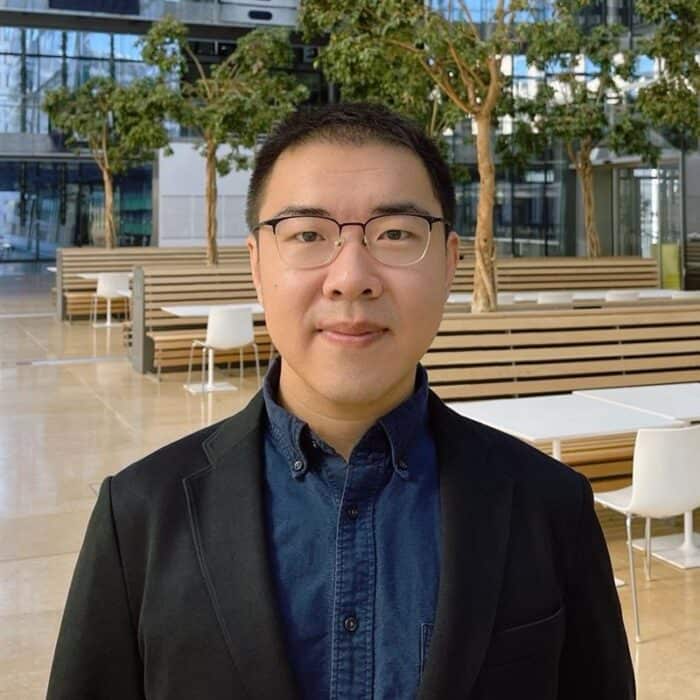Dr Haotian Chen he/him

Lecturer
Strategic Research Areas
My research passion lies in advancing flexible and stretchable electronics, with a particular focus on tactile sensors, haptic systems, and their integration into soft, bio-compatible platforms. I am excited by the intersection of materials science, electronics, and human-centred applications—especially where innovation can directly improve quality of life through enhanced human–machine interaction, wearable health technologies, and prosthetics.
In my group, we explore novel materials and advanced manufacture methods to develop soft sensors and actuators that mimic the sensing and feedback capabilities of human skin. Our work spans from fundamental research on materials and fabrication processes to system-level integration and application-driven prototyping. We actively collaborate across disciplines, including robotics, biomedical engineering, and neuroscience, and we’re always keen to connect with researchers in AI, big data, and design to enhance the functionality and intelligence of our systems.
I am particularly interested in interdisciplinary projects that bring together engineering and biomedical application,—for example, wearable systems for healthcare monitoring and human, robot tactile communication and rehabilitation with wearable systems. Within the CDT, I would be excited to supervise projects that are mission-driven, collaborative, and challenge-led, especially those that span boundaries between technology and human experience. As a supervisor, I see myself as a reflective partner—someone who supports and challenges students through thoughtful dialogue rather than directive instruction. I believe that students are best placed to shape and drive their own research journeys. My role is to encourage critical thinking, foster intellectual curiosity, and guide them through open-ended, Socratic questioning. Rather than setting rigid boundaries, I aim to create a space where students feel empowered to explore, reflect, and grow with confidence and independence.
EDI have always been central to how I approach research and team-building. During my postdoctoral experience, I benefited greatly from working in an inclusive environment—one that encouraged the exchange of ideas across different countries, cultures, and disciplinary backgrounds. This diversity enriched my perspective and strengthened collaboration, and it continues to shape how I lead my own group today. I believe that fostering an open, respectful, and accessible environment is essential for building a united and effective research community. My group is diverse, with students from a variety of countries and academic backgrounds. While they work on different projects and bring different skills, I actively encourage regular meetings and open discussions to promote idea exchange and interdisciplinary thinking.
I have a deep passion for life and a constant curiosity to explore new experiences—whether it’s trying unfamiliar food, visiting new cities, or simply having conversations with people from different backgrounds. I believe that engaging with the world through diverse perspectives is one of the most meaningful ways to learn. This sense of curiosity and openness fuels my enthusiasm not only for life but also for my research. It drives me to stay creative, remain open-minded, and approach challenges with energy and optimism.”

